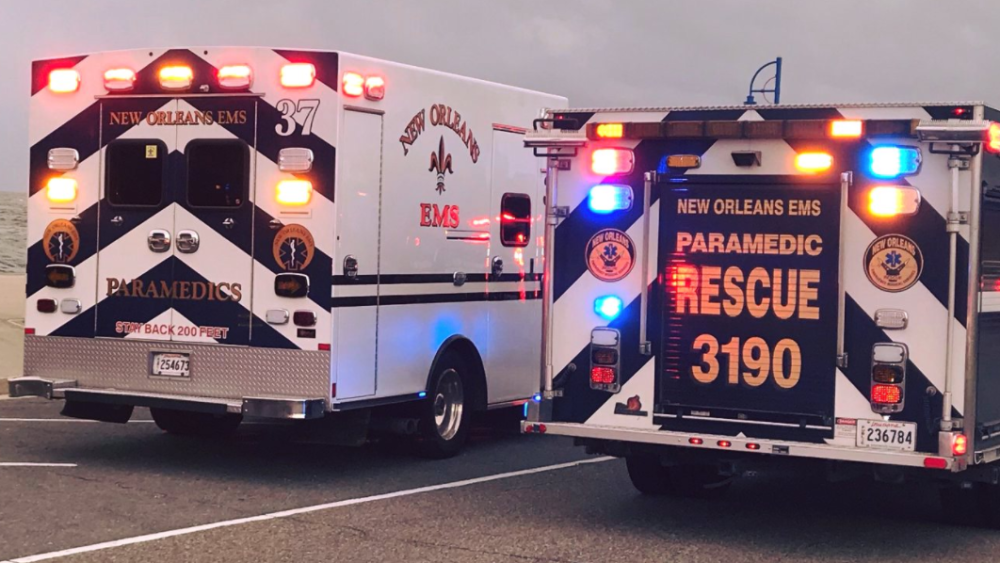Jeff Adelson
The Times-Picayune | The New Orleans Advocate
NEW ORLEANS — New Orleans fire and EMS officials sought to reassure the City Council that deep cuts to next year’s budget will not hinder their departments.
Still, as officials presented their budget during a series of City Council hearings, there were acknowledgements that the cuts could create challenges.
“With less staff and less apparatus due to the furloughs and the COVID challenge, it’ll be difficult to maintain our response time to calls for service to fires and medical calls ... but we’re utilizing technology and training in an attempt to stay as near as possible to current response times,” interim New Orleans Fire Superintendent Roman Nelson said.
The cuts come as New Orleans officials are preparing for a $92 million drop in revenue next year due to the ongoing effects of the coronavirus pandemic, including cancelled events and drops in sales tax revenue. That has translated into a $633.6 million spending plan that is down 12% citywide from this year’s budget.
The budget includes a mandatory furlough day every two weeks for all rank-and-file city workers and a 10% pay cut for higher level staff. Identical furloughs were implemented for the remainder of this year last month.
The firefighters union has been among the most vocal opponents of the pay cuts for workers, warning the department has to take engines out of service and could increase the time it takes for the department to respond to emergencies.
Nelson, who took over the department after former Superintendent Tim McConnell retired last month, said that so far the department has done a good job of maintaining response times.
The Fire Department’s budget will drop 8% next year to $108.6 million, almost entirely due to reductions in personnel expenditures.
Nelson said efforts to hire 63 additional firefighters through a federal grant, which would bring the department’s total staffing to about 635, are still underway. The federal government has waived the need for the city to pony up matching funds and is currently in discussions to determine how the current staffing situation will play into the grant’s requirements, he said.
Since the furloughs, the department has not seen a dramatic rise in people leaving the department, Nelson said. About 20 people have left this year, compared to about 25 last year, he said.
There have been issues hiring new firefighters, particularly due to failed drug tests, Nelson said. He blamed this, in part, on the possibility some potential recruits were taking CBD, a legal supplement derived from the marijuana plant, but that some “unscrupulous” suppliers were spiking it with the chemical that gives the drug its high.
The city’s Emergency Medical Services is looking at an 18% cut next year, and will have a budget of roughly $16.7 million. That will largely come from pay cuts and leaving unfilled positions vacant, said Dr. Emily Nichols, the EMS medical director.
The department has gotten approval for a slight tweak to the furloughs facing other departments, with field staff having their schedules shifted to minimize the impact on response times, Nichols said.
So far, that has meant one or two fewer ambulances available on any given day, Nichols said.
The pandemic hit the department particularly hard, with a 25% increase in calls at the same time 25% of its staff were unavailable because of concerns they had been exposed to the virus, Nichols said. By last month, calls had declined to pre-pandemic levels and the number of people out sick was down to the single digits, she said.
Response times have not seen a dramatic change since the furloughs were implemented. About 69% of calls got a response within the time required by national standards, an amount that rose to 74% by August with the addition of surge ambulances that were provided by the state to assist with the pandemic, Nichols said.
Those surge ambulances were discontinued at the start of the month, and since then the department has met its response time goals 70% to 72% of the time, Nichols said.
Nichols also noted that at its proposed budget level, the department will actually be adding money to the city budget because it will bring in more through payments for its services and federal money.
The council is required to adopt the budget by Dec. 1.
___
(c)2020 The Times-Picayune | The New Orleans Advocate












